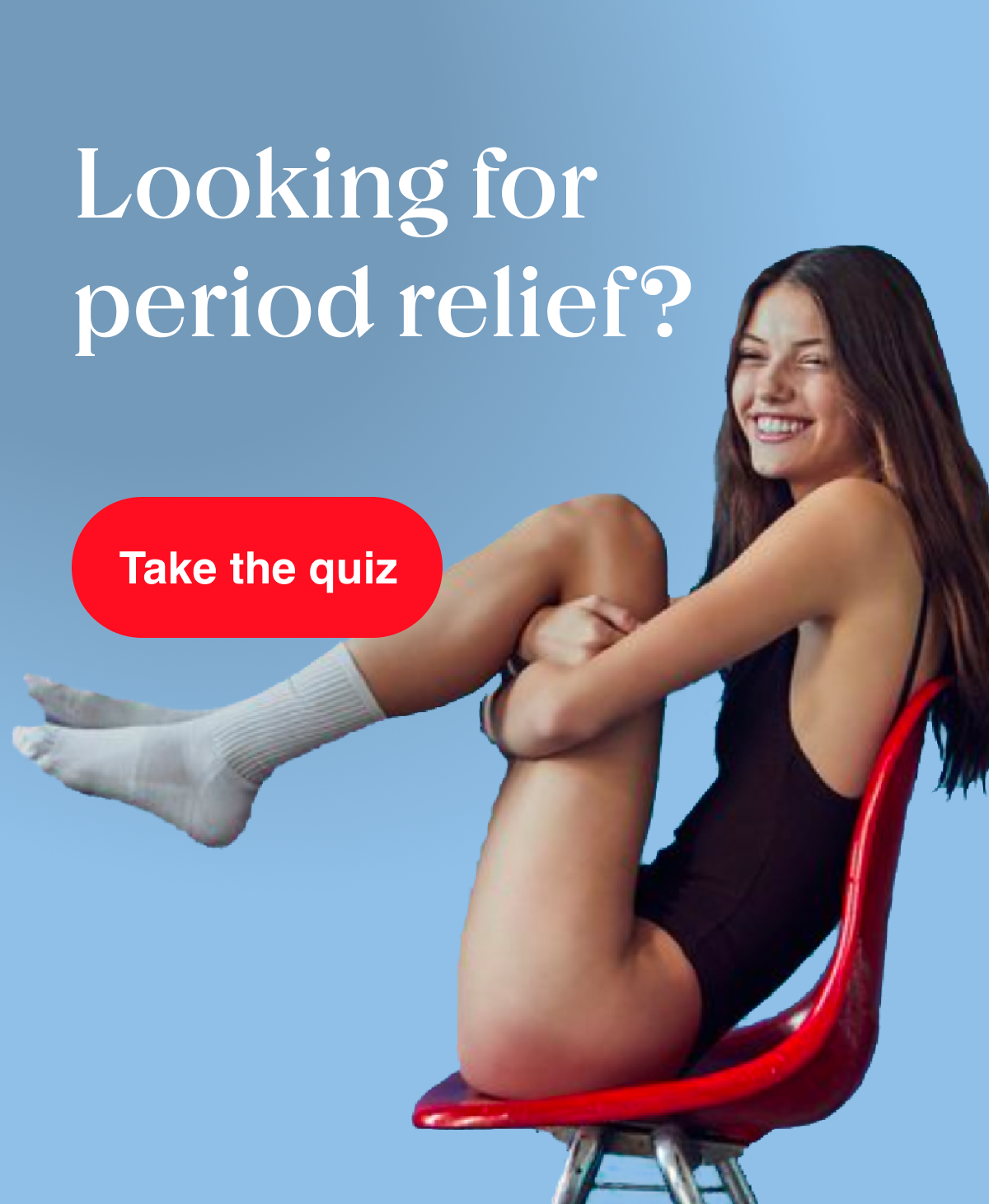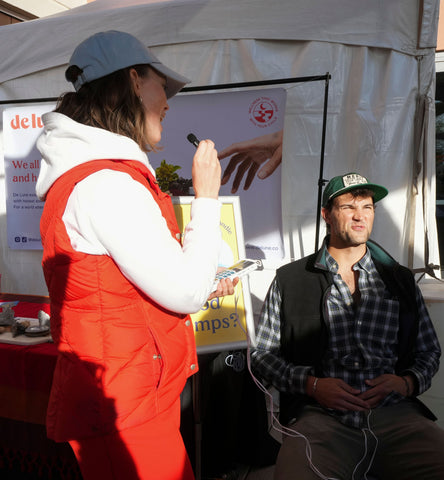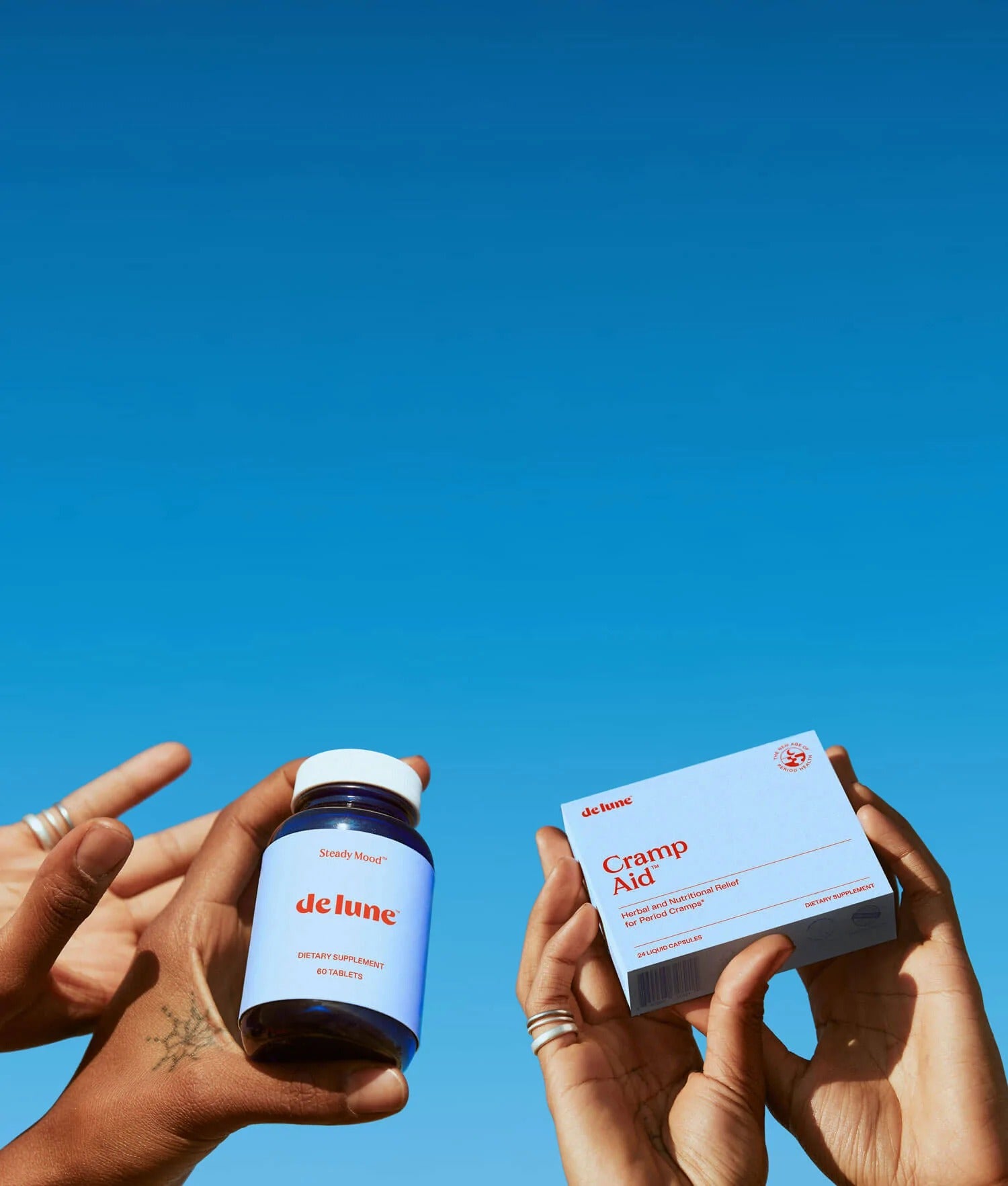Did you know the American College of Obstetricians and Gynecologists (ACOG) considers periods to be a ‘fifth vital sign’? (1)
Periods are actually great communicators, if only we listen.
What is a vital sign?
Vital signs are measurements that indicate how well your body’s essential functions are working. They help tell the story of your overall health status.
There are four vital signs that are widely used and universally accepted: pulse rate, temperature, breathing rate, and blood pressure.
Although the ACOG has proposed that menstruation should occupy the spot of the fifth vital sign, other members of the medical community have suggested pain should hold the title (2, 3, 4). For 90% of menstruating people, periods and pain go together (5).
Your period is trying to tell you something...
If your hormones could text you, you’d hear from them on your period. If your period is super difficult or painful, their message would be in all-caps: SOS 🚩.
Your period is just one phase of your cycle, but (to continue the texting metaphor) it’s the phase with the best cell service—a direct hotline between your hormones and the outside world. Whereas the other phases of your cycle offer only subtle (if any) clues that they’re happening, your period is loud, proud, and impossible to ignore. And it doesn’t mince words.
When your period arrives easily:
It’s like getting an “all good!” status update from your hormones. This message is a gift; the more time, energy, and money we invest in our personal wellness, the more we treasure this incredibly valuable marker for how well our efforts are paying off. And while checking your other vital signs usually ends with a medical bill, your period comes free of charge.
When your period is anything but easy:Its message is even more valuable. Brutal cramps and PMS are your hormones' way of telling you they’re out of balance, and need more support. This information is critical because…
Difficult periods are the tip of the iceberg.
Your period is just the messenger. The final boss is whatever caused the hormonal imbalance.
The hormones that bring you your period don’t exist in a vacuum. They’re constantly interacting with the rest of your body, and they don’t just decide to fall out of balance all by themselves.
The real value in embracing your period as a vital sign lies in uncovering the reason why your hormones are working against you, rather than for you. Hormonal issues tend to snowball when ignored, so your period is a tool you can use to advocate for your health, and address your root cause before things escalate.
Common culprits behind hormonal imbalances and worsened period symptoms include: (6, 7, 8, 9, 10, 11, 12, 13, 14)
- Low nutrient levels (especially vitamin B6, magnesium, zinc, or calcium).
- Inflammation
- Sleep disturbances
- Stress
- An underlying condition, such as PCOS or endometriosis
If you’re unsure what’s throwing your hormones off, lifestyle changes are a great place to start. Sometimes minor tweaks can make a big difference, like eating more nutrient-rich foods, taking your supplements, getting your sleep habits in check, and cutting back on pro-inflammatory habits like smoking or drinking too much.
We designed Steady Mood—our daily multi for PMS relief and full-cycle hormonal harmony—to supply the nutrients that people with PMS are usually low in, and relieve stress and inflammation with adaptogenic herbs.
Sometimes medical treatment is needed. It’s time to see a doctor if you experience severe period pain or PMS symptoms that interfere with your daily activities, have very heavy periods, irregular periods, or bleeding between periods.
Your cycle isn’t just your period.
Your menstrual cycle is always happening; your period is just the part you can see.
The hormones that drive your period are sensitive to what’s going on elsewhere in your body, all cycle long. In fact, the real hormonal magic really happens during the parts you can’t see.
Ovulation, for example, happens ~2 weeks before your period starts, and it has everything to do with how healthy your cycle is. Generally, the better you’re able to support your body through ovulation, the lighter and more regular your period (15), and fewer painful cramps and PMS symptoms come with it (16).
We’ve been conditioned to ignore our monthly cycle until there’s an issue with it. But really, your cycle needs support every day to bring you easy periods. We designed Steady Mood to be that support.
You and your hormones are on the same team.
Despite everything that can go wrong with hormones, their job isn’t to make you miserable. Their job is to help you!
When your hormones get the support they need, they can help you be your most energetic, vibrant self, all month long.
Should life throw them out of whack (it happens!) thankfully you have an elegant, reliable feedback loop (your period) that lets you know when they need extra help… if you know to listen.
This information is for education purposes only. It is not a substitute for professional medical advice, and is not intended to diagnose, treat, cure, or prevent any condition.
References
2. Morone, N. E., & Weiner, D. K. (2013). Pain as the fifth vital sign: exposing the vital need for pain education. Clinical therapeutics, 35(11), 1728-1732.
3. Lynch, M. (2001). Pain as the fifth vital sign. Journal of Infusion Nursing, 24(2), 85-94.
4. Merboth, M. K., & Barnason, S. (2000). Managing pain: the fifth vital sign. The Nursing Clinics of North America, 35(2), 375-383.
5. Coco, A. S. (1999). Primary dysmenorrhea. American family physician, 60(2), 489.
6. Stewart, A. (1987). Clinical and biochemical effects of nutritional supplementation on the premenstrual syndrome. The Journal of reproductive medicine, 32(6), 435-441.
7. Sherwood, R. A., Rocks, B. F., Stewart, A., & Saxton, R. S. (1986). Magnesium and the premenstrual syndrome. Annals of clinical biochemistry, 23(6), 667-670.
8. Bertone-Johnson, E. R., Hankinson, S. E., Bendich, A., Johnson, S. R., Willett, W. C., & Manson, J. E. (2005). Calcium and vitamin D intake and risk of incident premenstrual syndrome. Archives of internal medicine, 165(11), 1246-1252.
9. Posaci, C., Erten, O., Üren, A., & Acar, B. (1994). Plasma copper, zinc and magnesium levels in patients with premenstrual tension syndrome. Acta obstetricia et gynecologica Scandinavica, 73(6), 452-455.
10. Mahoney, M. M. (2010). Shift work, jet lag, and female reproduction. International journal of endocrinology, 2010.
11. Kalantaridou, S. N., Makrigiannakis, A., Zoumakis, E., & Chrousos, G. P. (2004). Stress and the female reproductive system. Journal of reproductive immunology, 62(1-2), 61-68.
12. Windham, G. C., Elkin, E. P., Swan, S. H., Waller, K. O., & Fenster, L. (1999). Cigarette smoking and effects on menstrual function. Obstetrics & Gynecology, 93(1), 59-65.
13. Scott, B. (2014). Estrogen Dominance in Endometriosis & Naturopathic Treatments (Doctoral dissertation).
14. Duncan, W. C. (2014). A guide to understanding polycystic ovary syndrome (PCOS). Journal of Family Planning and Reproductive Health Care, 40(3), 217-225.
15. InformedHealth.org [Internet]. Cologne, Germany: Institute for Quality and Efficiency in Health Care (IQWiG); 2006-. What are the treatment options for heavy periods? [Updated 2017 May 4].
16. Rapkin, A. J., Morgan, M., Goldman, L., Brann, D. W., Simone, D., & Mahesh, V. B. (1997). Progesterone metabolite allopregnanolone in women with premenstrual syndrome. Obstetrics & Gynecology, 90(5), 709-714.










